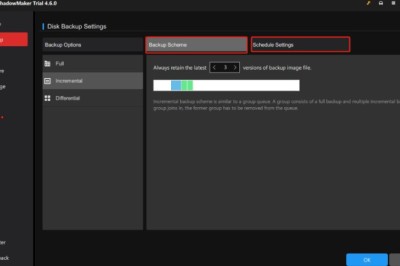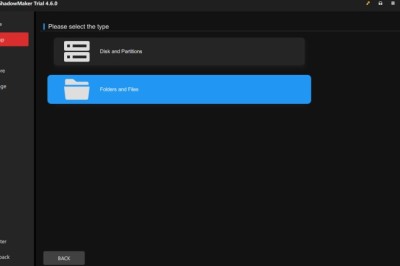views
SaaS is another vivid trend commonly used across the globe. It is highly preferred by businesses due to its amazing accessibility and no additional requirement of establishing an infrastructure. In other words, all you need to have is a strong internet connection and a browser. So gone are the days when businesses were completely dependable on in-house expertise.
It has been proven over recent years, how amazing these concepts turn out to be. The numbers say it all! The SaaS industry in the year 2020 was around $121 billion and it increased to $121 just in the next year, i.e. 2021. And the money keeps on increasing day by day. The following post focuses on what SaaS is and how it is beneficial in the long run. Also, later on, we will discuss some critical challenges you might come across during SaaS application development.
What is SaaS?
SaaS stands for Software as a Service. Basically, here businesses most of the time tend to operate in the cloud. Now there are different types of SaaS found such as Infrastructure as a Service (IaaS), Platform as a Service (PaaS), and Software as a Service (SaaS). Sectors making the most of SaaS applications include mobile applications, HR management software, Payroll, resource planning software, CRM software, Performance management and a lot more.
Do you remember that earlier we used to use CD ROMs and Floppy disks to download huge files and folders? Slowly and steadily the power of the internet did bring a severe revolution. In the present times, it is quite possible to send and receive large and large chunks of data through reliable external servers and that too pretty quickly. Today, SaaS services seem to have become pretty essential, after all, it turns out to be an amazing new way of accessing information from anywhere and at any point in time.
It may quite interest you to know that some of the major SaaS service providers include Microsoft, Salesforce, Adobe (Creative Cloud), Box, Amazon Web Services and Oracle. Popular SaaS solutions include Microsoft Office 365, Google G Suite, Slack, Dropbox, and Adobe Creative Cloud.
Traditional Licensed Software VS SaaS Software
Now most of the traditional softwares is bought or you have to pay licence fees at regular intervals or pay an upfront cost. So in other words, all you have to do is to install the software once and keep paying the hefty price. Another drawback of these traditional or conventional licensed softwares was that they were limited to one user or device. Well, fortunately, that’s not the case with SaaS softwares.
SaaS is more kind of a distribution model where providers tend to host the application on the cloud and in return, the end users are charged some kind of a fixed subscription fee.
Time to compare traditional licensed softwares as well as SaaS softwares.
#1 Customization
When it comes to customization, regular software might seem to have an upper hand here in comparison to Software as a Service (SaaS) technology. You see most of the SaaS services are pre-built applications in other words, they are most of the time available on subscriptions. On the other hand, traditional softwares has proven to be flexible to a great extent. So on and all, when it comes to customization, traditional licensed softwares definitely seems to have the upper hand.
#2 Cost
Generally, on-premise solutions require high upfront costs for implementation. And not just that, it can range from initial implementation fees to yearly maintenance of hardware assets, upgrades and self-maintenance. As a result, you just keep on paying a hefty price every now and then.
Whereas the SaaS model on the other hand offers a great amount of flexibility. More or less, it depends on your needs. Here all you have to do is simply pay for what exactly you require. As per the fees is concerned, SaaS payment models tend to have monthly or annual fees to licence the product. So here you get subscription-based fees featuring both seamless maintenance and support. So in other words, the SaaS model is extremely cost-effective in comparison to on-premise models.
#3 Support and Maintenance
Another solid difference is support and maintenance. Unfortunately, traditional softwares fails to offer seamless support and maintenance. Unless the software is literally not on fire, you cannot call customer support here. Well, that’s certainly not the case with SaaS models. Here the vendor is thoroughly responsible for maintaining as well as upgrading and keeping tabs on their end users from time to time. In addition, SaaS application providers tend to offer a great amount of security and take crucial measures when it comes to better disaster recovery.
Further below I would like to mention how SaaS application development is beneficial for businesses in the long run.
Are you looking for an intriguing alternative to standard or conventional licensed models? If so, here’s your chance! Time to take a sneak peek into SaaS application development models.
Benefits of Using SaaS Applications
#1 Reduced time
Lots and lots of time is reduced in comparison to those conventional SaaS models. You see here SaaS-based applications are pre-installed and configured so you no longer have to do it all by yourself. All you have to do is give a provision to the server and voila! Things will be taken care of within a few hours. As a result, the overall time spent on these SaaS applications which is quite unnecessary and a total waste can be reduced to a great extent.
#2 Cost-effective
Another benefit of using SaaS applications is that it turns out to be way more cost-effective than conventional ones. You see most of the time SaaS applications stay in shared or multi-tenant environments. As a result, the hardware and software licences stay low in comparison to the traditional model.
In addition to being cost-effective, when you opt for SaaS-based applications, you can simply increase your customer base to a great extent. Also, there is the benefit of reduced maintenance costs.
#3 Enhanced Cash Flow
The next benefit in line is enhanced cash flow. You see SaaS models or SaaS applications have the power to increase the cash flow and this is beneficial for both the provider as well as the end user. Now what is cash flow? Well, it’s an amount of cash going in and out of the company. And when the company is able to access a wide range of liquid assets, it becomes a pretty win-win situation for all. Also, when you have an increased amount of cash flow, you can come up with crisp short-term decisions as well as long-term decisions.
Using a SaaS structure, your business is bound to receive revenue on a recurring basis. In fact, you can predict it very well. As a result, companies are bound to gain profits and conduct smooth operations in the very long run.
On the contrary, this specific advantage grabs the attention of several investors and as a result, more and more funds are well taken care of and of course, secured. This also leads to high customer retention rates and compels the customers to stay loyal for the long run.
In addition to all the aforementioned advantages, SaaS application development projects can lead to high-end accessibility, automatic updates, operational management, adequate amount of data storage, white labelling and customization, seamless app integration, precise reporting and analytics, increased security, high-end scalability, enhanced security and above all no hardware maintenance and a lot more.
Now much like any other and every other technological development even SaaS has a fair share of controversies too. Moving on, let us focus on some SaaS controversies and pitfalls.
SaaS Challenges to Take into Account
#1 Less Control
One of the biggest disadvantages or challenges here is that here you won’t be able to have full control. Here businesses, unfortunately, have to rely too much on third-party vendors for delivering appropriate services. And unfortunately, if you end up choosing any random SaaS provider then you have got a lot to lose. Also, you may face several unwanted disruptions and security breaches.
So before hiring any SaaS application provider make sure you get to know them thoroughly. There have been several cases where providers update the version by themselves and businesses have no idea about it or sometimes they have to do so unwillingly. In addition, even when you are trying to switch providers, moving such huge chunks can be pretty dangerous.
#2 Performance
Another major drawback that must be taken into consideration here is performance issues. What if the distance between SaaS users and data centres is pretty much? This definitely leads to high latency and performance issues. You see, buying SaaS apps without having much know-how about them can be quite problematic. In the worst case situations, you might waste ample of money and manage confidential data pretty poorly. This means losing more and more.
Wrapping Things Up!
Overall, SaaS is pretty trending and kind of an intimidating concept. No matter how many disadvantages or challenges it brings to the table there is always a way out to succeed. And one shouldn’t ignore the fact that the benefits offered by these SaaS applications are way more than the traditional and conventional ones.
Being easily available and accessible to rapid deployment, easy to install, any updates or troubleshooting is taken care of by the service provider, high adoption rates, amazing flexibility and scalability, multi-platform compatibility, and most of the CRMs, accounting and sales software are created in the form of SaaS applications. So that’s all for now! Are you ready to dive into the sea of SaaS application development?




















Comments
0 comment